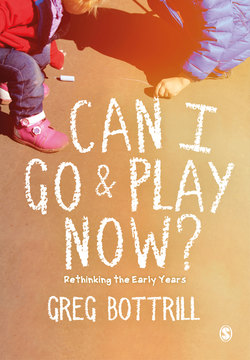Читать книгу Can I Go and Play Now? - Greg Bottrill - Страница 23
На сайте Литреса книга снята с продажи.
Part 2 Getting Continuous Provision Right
ОглавлениеIntroduction
Continuous Provision and getting it right is the most integral part of your day. Get it wrong and children cannot progress but rather stagnate in an environment that offers little challenge or opportunity. Get it right and you give your children the very best start and an atmosphere in which they can thrive. Continuous Provision must be skills based, open ended, collaborative and neutral. It must engage, provoke and facilitate learning.
So how do we get it right?
First, we need to give ourselves a break – an actual break. We have to step back and remove ourselves from the cycle of coming in to school first thing and setting up the Continuous Provision. More often than not, we arrive and busy ourselves in trying to make each area of provision purposeful and attractive, which is all commendable but what we’re actually doing here is putting a cap on learning. We are limiting children to our choices. We are not enabling – we are unconsciously telling children what they can experience and explore.
If I like playing in the water and want to explore its journey down ramps or through pipes but the adult has meticulously set up the zone with dinosaurs and a selection of rocks and pebbles with a plastic island in the middle all bedecked with foam numbers, can I as a child explore that zone as I wish? Is the adult not interpreting the space even before I have arrived with my childish imagination and dreams? We need to step away from the Continuous Provision and allow children the freedom to interpret. So, first things first, when you come in to school or your setting stop yourself from ‘setting up’. Rather spend the time carrying out a Continuous Provision audit. Interrogate your Continuous Provision. Ask yourself the following questions:
Does it promote the skills that I know my children need to develop?
Does it tie in with interests that I have seen or heard my children talk about?
Is it appealing to both boys and girls?
To do this, you need to invest your time not in planning sheets or carefully setting up tables, but rather in shelving units.
Each area of Continuous Provision is most effective when it is open ended
To achieve this, you need to display a range of resources that children can freely access (and return) so that rather than setting up, you are setting out.
Use whatever containers you feel are appropriate: if you are a homely person consider wicker baskets; if you are an Ikea goddess, then what better excuse for a trip than the acquisition of new plastic boxes or baskets? Neutral colours are, of course, best because you remove the danger of appealing only to one gender (although most boys deep down seem to love pink). Ultimately, you are looking for ways to effectively display a wide range of resources that the children can access and then introduce by themselves in to the provision. If you have a group of children who love dinosaurs, then consider a basket of these alongside a stack of wooden blocks, both of which are displayed on the shelving unit in the provision area. The children will select the dinosaurs and perhaps build a den or volcano from the blocks, but if these resources are in the Play-Doh, they will just as likely explore the dough with the dinosaurs, use it as cement for the blocks, or indeed interpret it in multiple ways. Suddenly, you are encouraging children to apply their imagination into their world. Your neatly set-up dino world on the Play-Doh table will only appeal to the dinosaur lovers, pretty much instantly closing it down to any child who might just want to explore the Play-Doh itself or get creative with Play-Doh cakes.
